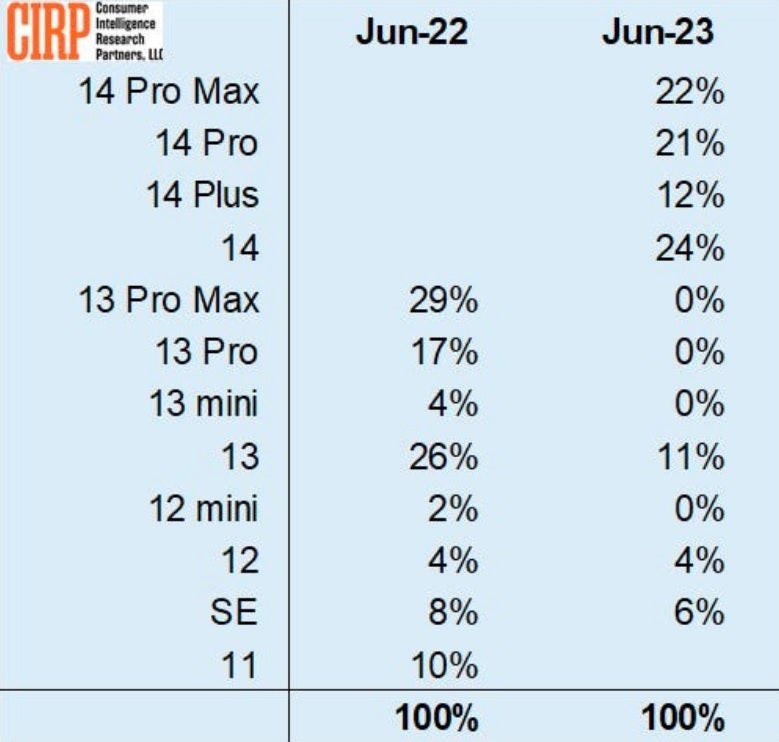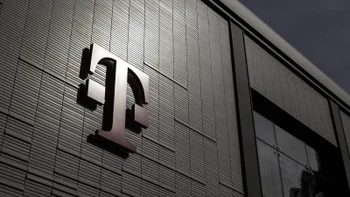Data shows iPhone buyers are moving toward the cheaper, non-Pro models

During the calendar second quarter that ended in June, the average selling price for the iPhone in the U.S. declined from April through June for the first time since 2017. Research firm CIRP (via 9to5Mac) discovered that the US-WARP (weighted average retail price) for the iPhone dropped from $988 at the end of the calendar first quarter ended in March to $948 at the end of the quarter ended in June.
As CIRP notes, there are two factors that determine the iPhone's US-WARP. That would be the model mix/storage upgrades and Apple's pricing. CIRP is focusing on model mix in the latest report and reported something that we mentioned a few weeks back: Apple has not raised the price of its Pro series or the compatible iPhone X models since 2017. Despite this, things like the economy and overall preference of iPhone buyers have slowly moved consumers away from the more expensive iPhone models.
The gap between the market share of the Pro and non-Pro iPhone models narrowed in the June 2023 quarter
For the June quarter, the iPhone 14 Pro models sold more than the non-Pro devices but the gap between them narrowed. For example, during the calendar second quarter, the iPhone 14 Pro and iPhone 14 Pro Max generated 43% of iPhone sales while the iPhone 14 and iPhone 14 Plus accounted for 36%. During the same quarter a year earlier, 46% of iPhone sales were registered by the iPhone 13 Pro and iPhone 13 Pro Max compared to 30% for the iPhone 13 and iPhone 13 mini.

There has been a noticeable shift among iPhone buyers year-over-year
Looking at the best-selling model during the June quarter reveals that iPhone buyers might be looking at price over features. During the June 2022 quarter, the iPhone 13 Pro Max was the top-selling iPhone ringing up 29% of total iPhone sales in the U.S. The top-selling iPhone during the June 2023 quarter was the iPhone 14 with 24% of iPhone sales in the States. With the big difference in the starting price of an iPhone 14 ($799) compared to the iPhone 14 Pro Max ($1,099), even a small change in the percentages can change the average selling price.
Also helping the non-Pro models this year has been the iPhone 14 Plus. Even though it was the lowest selling iPhone during the June quarter with only 12% of U.S. sales, it had triple the 4% share that the phone it replaced, the iPhone 13 mini, had during the same quarter last year. We can assume that some of the iPhone 14 Plus purchases came at the expense of iPhone 14 Pro Max sales as consumers who wanted the largest-screened iPhone and spectacular battery life could save money by buying the less-expensive model.
Apple has buffed up the non-Pro iPhone 15 models
And with the trend apparently shifting to the non-Pro models, Apple has reportedly buffed up the iPhone 15 and iPhone 15 Plus to include a 48MP Wide primary camera using a stacked CMOS Image Sensor that won't be on the Pro models until next year. As a result, the non-Pro iPhone 15 handsets will have cameras that collect more light than the cameras on the more expensive models. The iPhone 15 and iPhone 15 Plus will also sport the Dynamic Island for the first time and will be powered by the same 4nm A16 Bionic chipset that powers the iPhone 14 Pro line.
The iPhone 15 Pro and iPhone 15 Pro Max will be powered by the 3nm A17 Bionic SoC, and are rumored to each sport a titanium chassis. The iPhone 15 Pro Max will supposedly be equipped with a periscope lens delivering up to 6x optical zoom.
All four iPhone 15 models are expected to get a hike in battery capacity and feature a USB-C port for charging and data transfers replacing Apple's proprietary Lightning port. Pricing could remain the same for the non-Pro models (another reason why the trend toward the non-Pro units might accelerate with the 2023 iPhone 15 line) while the iPhone 15 Pro could get hit with a $100 price hike rising to as much as $200 for the iPhone 15 Pro Max.
The iPhone 15 series is expected to be unveiled on September 12th with pre-orders starting on September 15th. The phones could go on sale starting September 22nd. Whether this trend holds up for the new 2023 line is something that we might be able to get an early read on by looking at what happens during the pre-order period.
Follow us on Google News










![A new Android bug is making it impossible to install new apps. Are you affected? [UPDATE]](https://m-cdn.phonearena.com/images/article/176703-wide-two_350/A-new-Android-bug-is-making-it-impossible-to-install-new-apps.-Are-you-affected-UPDATE.webp)

Things that are NOT allowed:
To help keep our community safe and free from spam, we apply temporary limits to newly created accounts: